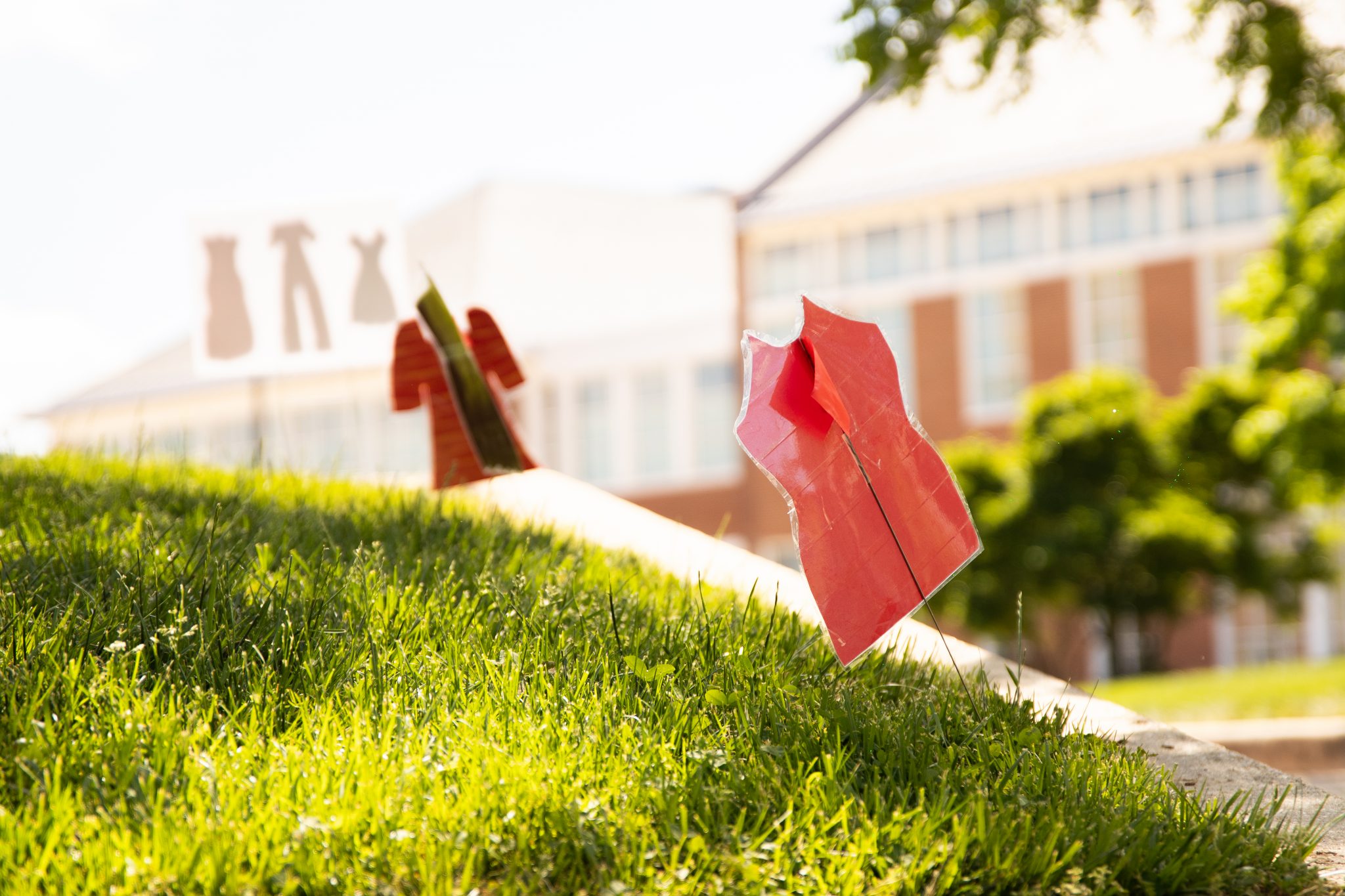Paper cutouts of red clothing stood in the grass around Hornbake Plaza Wednesday to raise awareness for missing and murdered Indigenous people.
The two-day art installation — sponsored by Multicultural Involvement Community Advocacy and the Native American and Indigenous Student Union — aimed to spur conversations at the University of Maryland about violence toward Indigenous people ahead of the May 5 National Day of Awareness for Missing and Murdered Indigenous Women and Girls.
MICA and NAISU handed out stickers and educational resources to passersby and raised funds for MMIWG Memorial Grove, an organization dedicated to promoting education about the issue. The installation moved to McKeldin Mall Thursday for the second day of its display.
Members of NAISU hosted a craft night prior to the installation to create the dresses and talk about the meaning behind them.
They used traditional ribbon skirts, overalls and the color red, which is commonly associated with Indigenous awareness and represents a call to action against violence against Indigenous people throughout the United States.
[UMD community raises awareness about sexual assault on Denim Day]
Linh Miyamoto, a sophomore information science major and NAISU’s current secretary, hoped the event would spur change and raise funds to help Indigenous communities. Some of Miyamoto’s family members have gone missing in the past, she said.
“It’s important to be aware of [what’s] going on here,” Miyamoto said.
In 2020, only 690 out of 5,293 incidents of missing and unidentified Indigenous women and girls were logged into a federal database, according to the National Crime Information Center.
Xandie Iti Lusakbi, a criminology and criminal justice doctoral student specializing in Indigenous criminology, said this statistic reflects the lack of awareness about the issue. Many Indigenous missing persons cases fall through the cracks, she said.
“In our communities, we know what’s happening, we see our relatives go missing and get murdered fairly consistently,” Iti Lusakbi, who is Choctaw and Ponca, said. “But outside of those circles, no one knows what’s going on.”
[UMD students rally for climate action, divestment on Earth Day]
Missing and murdered Indigenous people can be an “invisible” issue to those not involved, Iti Lusakbi, who also serves as the graduate student coordinator for Native American and Indigenous Student Involvement and Advocacy at MICA, said.
While the federal government has tried to address this problem, it’s difficult to get accurate statistics that reflect the actual number of incidents rather than just the number of reports, NAISU vice president Vy Thompson said.
“Regardless of what the numbers are, it doesn’t look good,” Thompson, a senior English major, said.
Abby Hardy, NAISU’s incoming president, said events like these are important because they raise awareness for an issue that’s not talked about enough.
“We’re facing a lot of difficulties,” Hardy said. “We’re not going to let the people who have gone missing be forgotten. We’re going to keep honoring them.”



